Prison overcrowding crisis: 'Ya wouldn’t let a dog live in there'
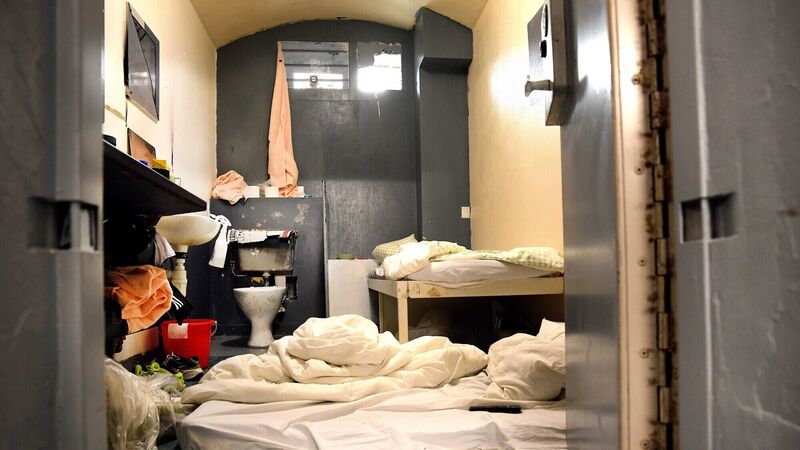
A cell in Mountjoy Prison with a mattress on the floor to accommodate a second prisoner due to overcrowding. Picture: Moya Nolan
The cell door could only open about a foot before it hit the mattress on the floor and the inmate lying on top of it.
The prison officer asked if we could have a look inside.
The inmate on the mattress pulled himself up and stepped out.
He was clearly agitated and sported a fresh black eye.
“Ya wouldn’t let a dog live in there,” he said.
“I’ve bites all over me and I’m all cramped,” pointing to red marks on his arms and legs and rubbing his shoulders.
A second prisoner appeared from the gloom inside and walked quietly out. A foreign national, he looked a bit bewildered.
Stooping under the doorway we entered, and were immediately hit by the heat and thick, stuffy air.
The mattress was positioned across the floor. It was in poor condition, torn in parts and barely an inch thick.
On the far right of the cell was a narrow single bed, positioned lengthways towards the door.
On the left, facing the door, was a toilet, open to the rest of the cell, bar a small 3ft high screen separating it from the bed.
The toilet had no seat or lid. It neither looked nor smelled the best.
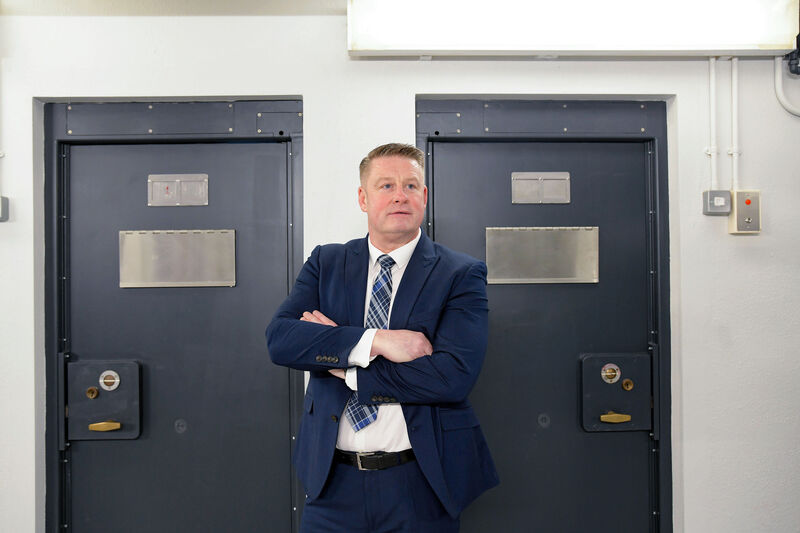
“The toilet’s leaking,” said the prisoner.
“We had to get the mop head and ram the mop into it to get it working.”
The mattress is placed sideways so he can watch the TV on the wall.
When he sleeps he turns it lengthways.
This means the mattress lies between the toilet and the cell door.
Most prisoners choose to lie with their head to the door rather than in front of the toilet.
The reason why is obvious, but it means when prisoner officers open the door they can bang it against the prisoner’s head, such is the lack of space.
Standing in the middle of the cell and stretching hands out either side leaves little over a half of foot of space.
“We’re living like animals,” said the prisoner, who appears to be under the influence of some substance.
“It’s wrecking my mental health, bleeding brutal it is. I know it’s a prison and all."
Governor David Tracey, who had told the prisoner to be honest, didn’t hold back himself.
“We are in a crisis here, with overcrowding.
And it’s not just Mountjoy, it’s Cork, they all are.”
We head to other cells in Mountjoy, the most well-known of the country’s jails, right in the heart of Dublin's north inner city.
On the day of our visit, January 14, there were 922 prisoners in the jail — a prison which has maximum space for 755 people.
“A prison should be 90% capacity to give you wriggle room to manage for incidents, but we are at 120%,” Mr Tracey said.
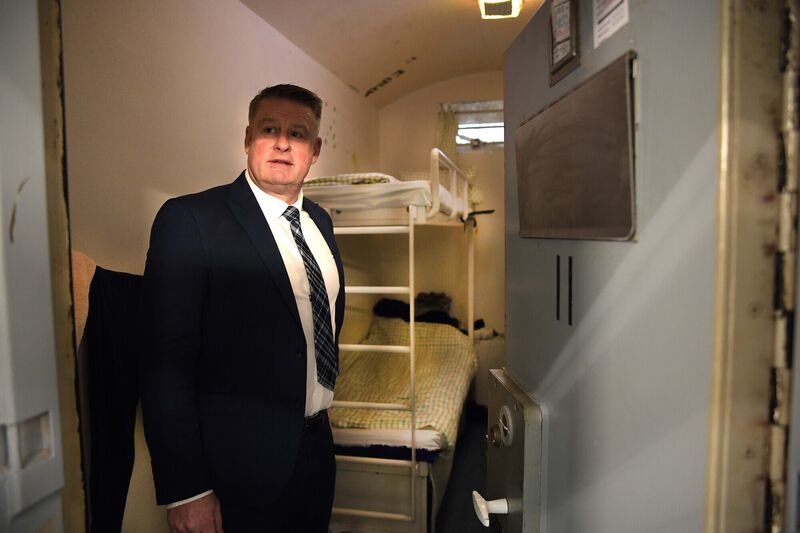
Irish Prison Service (IPS) figures show there are 5,041 prisoners for 4,543 spaces across the country — with Limerick Female Prison at 152% capacity, followed by Dochas Women’s Prison (121%), Limerick Male (119%) and Cork Prison (118%).
The increase in numbers has been particularly sharp in Mountjoy.
On the same date in 2023, there were 777 inmates in Mountjoy, meaning it has jumped by 19% in the last year.
On the same date in 2022, there were 676 prisoners — representing a massive 36% rise in numbers in just three years.
Mr Tracey said they were given 114 bunk beds in July 2023 to cope with the rising numbers.
This meant single beds were taken out of cells and bunk beds, narrower in size, were put in their place.
IPS figures show there are 330 bunk beds across all prisons.
On the day of our visit, there were 82 mattresses on floors in Mountjoy — accounting for a third of the 252 mattresses in use across the prison system.
That compares to 213 at the end of last December, 77 in December 2023, and 30 in December 2022.
Chief Officer Alan Marrey calls to another cell and two inmates exit.
The mattress is facing the door with the top of it pulled up and resting against a plastic chair, which, in turn, is against the toilet.
This allows the inmate to lie down with his head propped up to watch the TV.
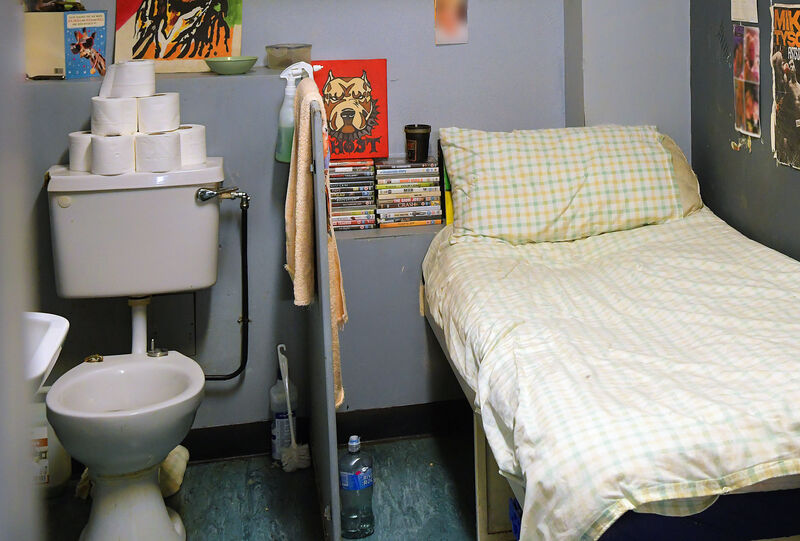
“Ya have to make the most of it,” the prisoner said, half smiling.
Asked how he would sleep, he pushed the mattress in front of the bed, squeezing it between the bed and the wall at the door.
“It’s better than having it in front of the toilet, it gives more room,” he said.
He lay down to demonstrate. He has to push his legs up in a spoon shape in order to sleep.
“You can’t stretch your legs out so it’s very cramped.”
Mr Tracey said cells are supposed to be a home for inmates: “It should be their place to relax.
"When they are outside they are puffing their chest out and all the bravado.
"So when they go into their cell they should be able to be themselves, have alone time, watch the telly or whatever.”
He said overcrowding was a double whammy for prisons — not only does it mean cells are overcrowded, but all the services — from exercise, to rehabilitation, to school as well as family visits — are cut.
This is because prison officers can, and regularly are, called to assist with essential functions, such as bringing prisoners to court or to hospital.
“If we have an extra 200 prisoners that means more court appointments, more hospital escorts,” Mr Tracey said.
“That means officers are taken from other areas — visits, schools, exercise, tuck shop — to help with the greater number of escorts."
“That causes frustration. Tensions have definitely increased because of overcrowding and reduced access to services.”
He added: “I want prisoners to be out of their cells during the day doing things, being active, be it the gym or school or kitchen or whatever and come back to their cells then, not just in their cells on top of each other.”
He said all of these things has led to incidents.
“We have had a 20% increase in interventions,” he said, referring to where prison officers have to go into cells and break fights up or where a prisoner is causing a disturbance.
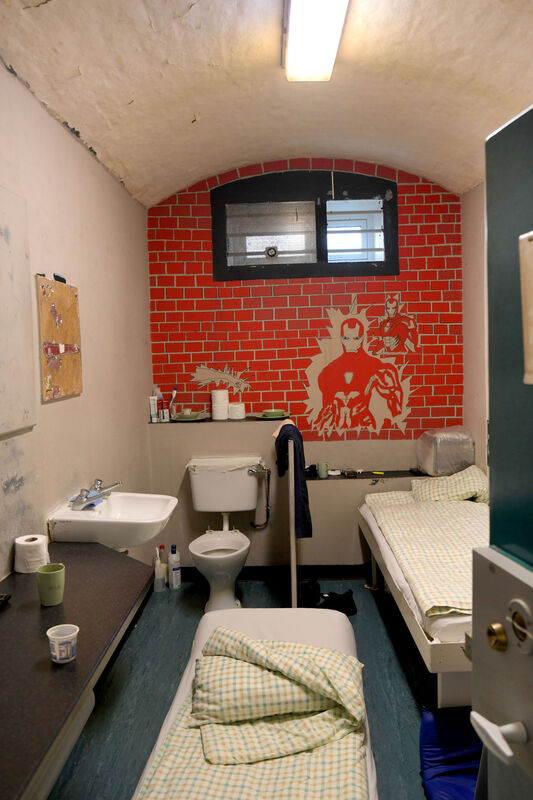
“You have situations where some prisoners smash the sinks in the cells, smash their toilets and staff come in and that’s what they find.”
Mr Tracey said there are dangers for prison officers inside cells: “They have kettles, so they can be used and prisoners will make a weapon out of anything.”
He said that while figures for last year are not yet available, there had been a 22% increase in prisoner-on-prisoner violence in 2023 across the system, which he said generally reflected the situation in Mountjoy.
We stop at another cell. This one has bunk beds. The two inmates step out as we head inside.
The cell is the smallest we’ve seen so far. Standing in the middle of the cell and stretching your hands out either side just leaves a gap of a couple of inches to the walls.
“You literally can’t swing a cat,” Mr Tracey said.
The cell is immaculately clean and tidy.
The inmates don’t mind doubling up. “We get on with other,” one said.
Asked about using the toilet, the first prisoner said: “When he goes to the toilet I sit and watch telly and have my back to him, to give him some privacy.”
Mountjoy has other pressures too, not least drugs and mental health.
“We have 16 protection groups in Mountjoy, meaning factions, some of them gangs, and those people can’t mix. We have senior gangland figures here,” he said.
These 16 groups, including the Kinahan cartel, comprise 313 prisoners — over a third of the entire population in the prison.
Keeping them apart is a full-time logistical headache, Mr Tracey said.
“We have oversight bodies ensuring that they get access to education, exercise, rehabilitative services, so there has to be very strict timetabling,” he said.
With over 70% of prisoners coming from an addiction background, dealing with the drugs trade is a full time business.
Drones are the latest threat in recent years.
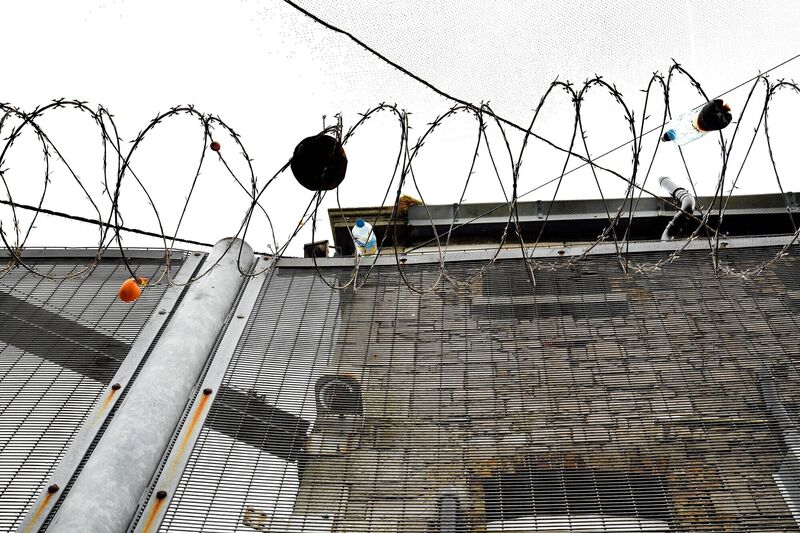
“I’d say we have a drone every day, two every day coming up to weekends,” Mr Murray said.
“They will burn through the net [covering the yards] if they are hot enough.
"Prison officers check the nets in the morning and before and after exercise.”
He said an inmate recently told him that a tablet that costs €1 on the street costs €10 inside, meaning it was a lucrative business for the drug bosses inside.
One captured drone was carrying about €1,000 tablets while another drone had 10 mobile phones.
Vulnerable inmates and prisoners who owe drug debts do all the collecting and hiding — and hope they don’t get caught.
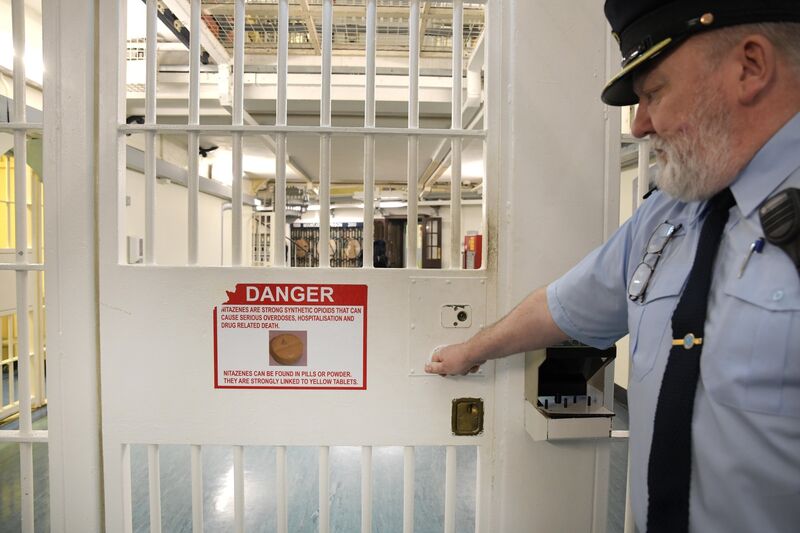
Up to 18 drone operators, often on nearby streets, have been arrested in operations with local gardaí.
Mr Tracey said they have had various drug emergencies in recent years and on one occasion, prisoners were cutting their thighs such was the effect the substances were having on them.
He also said Mountjoy was witnessing a huge upsurge in prisoners presenting with significant mental health issues.
While numbers coming into the prison have increased by 19% in the last year, psychiatrists told Mr Tracey that there has been a 63% increase in requests for psychiatric assessment of prisoners.
Asked why such a massive increase, Mr Tracey grappled for an explanation: “Because of overcrowding, people coming in with mental health presentations, on top of that, addiction, coming from broken homes, homelessness, which is a big factor now.
“People when they are committed to prison are seen by doctors and nurses and they can refer a prisoner for psychiatric assessment based on the presentation.”
He said the surge in mental health issues is reflected in demand for psychology appointments: “We have a five month waiting list, so many committals will be out before then or shortly after.
"Bear in mind that across the system over 70% of people in custody are serving less than 12 months, most of them out in nine months.”
He said that the resources available in the prison “haven’t increased with the numbers”, meaning the waiting list is growing, rather than falling.
IPS figures underline the scale of demand for psychology services: As of January 3, 524 people were being seen by the Psychology Service, with a further 2,078 on the waiting list.
That totals 2,600 inmates, more than half of all prisoners in the system.
The new Central Mental Hospital in Portrane promised to address the stubborn blockage in the system for decades whereby prisoners with the most severe psychiatric illnesses —
numbering around 15-20 — could not be transferred because of lack of space.
But Mr Tracey said the brand new facility in north Dublin has “created very, very few spaces for prisoners”.
But he said that, in addition to the fact that CMH is a therapeutic facility, albeit a secure one, and prisons were not a therapeutic facility, prison psychiatrists cannot compel a seriously ill prisoner to take his or her prescribed medication, whereas in the CMH they can.
“We have guys who think we are poisoning their food and these kind of situations can result in frustration and violence,” he said.
The tour leaves Mountjoy for what was the progression unit — for well-behaved inmates engaged in rehabilitation services before release — which had to close because of the general need for prison spaces.
Specifically, the Irish Prison Service needed a facility to house the ever-growing numbers of sex offenders, who have to be housed separately.
On the day of the visit, there were 208 in what is now called Mountjoy West — 143 of them sex protection prisoners.
The remaining inmates are in the life sentence prisoners unit and others are near the end of long sentences.
This facility is more modern. A lot of refurbishment work in ongoing or nearing completion, including two new landings, comprising 52 new single cells, which are in a better condition than the ones in Mountjoy.
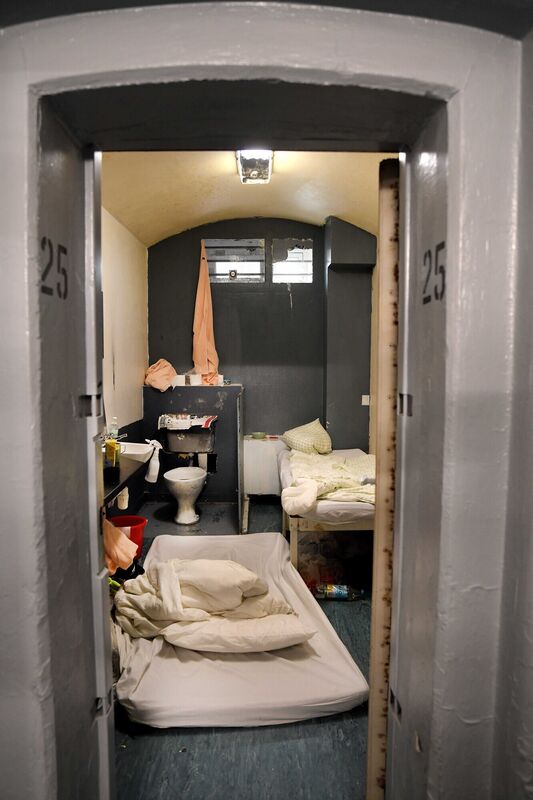
“Snagging is being done at the moment, so they will be operational soon,” Mr Tracey said.
“They are single cell for the time being, but that could change in six or nine months’ time, you could have two in a cell. We can’t rule it out.”
Assistant governor Patrick Moran said the cells will be for the growing numbers of sex offenders.
In another area, 16 new video booths are being designed, along with holding cells and toilets, to facilitate court sittings, increasing their number from the current five.
The adjacent school caters for up to 340 inmates in the two prisons and provides everything from reading and writing, to arts and crafts, recording studio, to cookery and barista training.
In a statement, the IPS said the Government had provided “significant capital funding” and that over 200 extra spaces had been created in recent years.
It said Justice Minister Helen McEntee had secured funding of €525m for prisons and probation in Budget 2025, an increase of €79m.
This will allow for the recruitment of 150 prison officers and 155 new prison spaces by the end of the year.
It includes €53m capital funding (up €22.5m).
The statement said the IPS was working with the department to progress plans for 1,100 extra spaces between 2024 and 2030.
Shortly after the visit, the government published the programme for government, which promised 1,500 extra prison spaces.
It is expected that the first phase of these extra spaces won’t start coming on stream until 2027 and 2028.
But prison bosses know they can’t “build their way out” of the overcrowding problem.
There have been countless reports on expanding alternatives to custody.
Apart from more spaces, the only other options are more people on temporary release (typically around 500 per month) and more community sanction alternatives for the courts.
Both would need a significant increase in the number of probation officers and a belief among judges that there are proper community options available.
There are almost 1,000 people on remand, compared to 830 in December 2022, adding to prison pressures.
The programme does mention more electronic tagging for prisoners and implementation of the high-level task force on mental health, which would see diversion of offenders with a mental illness from jails to much-needed community services.
Mountjoy is still haunted by the savage murder of an inmate in an overcrowded holding cell on August 1, 2006.
Gary Douch, from Coolock, north Dublin, was with six other prisoners, including his killer Stephen Egan, who had been previously diagnosed as “acutely psychotic” and a having a history of extreme violence.
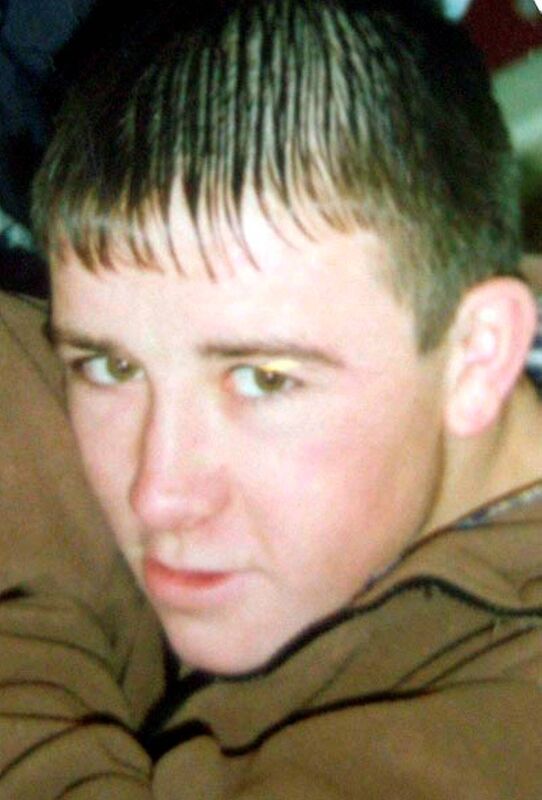
A commission of investigation into Mr Douch’s horrific death, carried out by senior counsel Gráinne McMorrow, said overcrowding at Mountjoy “completely undermined” the ability of the prison to respond to Douch’s request for protection and was “critical” in the circumstances leading to his death.
Every year on August 1, the Mountjoy governor joins Mr Douch’s mother to lay flowers at his grave, Mr Tracey said.
There are many who fear a similar reoccurrence, with both the IPS and Mr Tracey placing much of the credit in preventing it on the work and dedication of prison officers.
Many people suspect it may take another tragedy, like that of Gary Douch, to get ministers and the cabinet to treat prison overcrowding as the “crisis” that Mr Tracey believes it already is.













